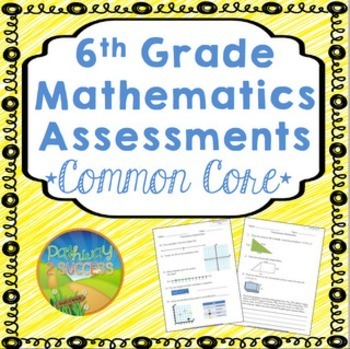6th Grade Math Assessments for Common Core
- PDF
Description
This 6th grade math assessment is Common Core aligned and broken up into two different versions so that you can administer the assessments as you see fit for your students: Five short assessments or one assessment of 52 questions.
Pages 3-32 are broken up into 5 short assessments on each of the Common Core Standard categories for 6th grade (Ratios and Proportional Relationships, The Number System, Expressions & Equations, Geometry, and Statistics & Probability).
Pages 31-50 combine all of the 5 shorter assessments into one assessment of 52 questions.
Uses
-pre- and post-assessments at the beginning and end of the year
-formative assessments to give you information on what your students already know how to do at the beginning of the year
-summative assessments after teaching concepts
Common Core Standards
On the top of each page, the Common Core Standard area is clearly listed. An answer key is included, with correct answers written in red for easy correcting. Scoring sheets for each test are also included, allowing you to tell right away which standards your students need support in.
While this is targeted for 6th grade, this would also be helpful for 7th graders going back to school, or older students receiving math intervention. Additionally, this can be used as a tool for students with disabilities who are significantly below grade level in math receiving special education services.
Other math assessments:
*****************************************************************************
Tips for Customers!
Click on the ★ above to follow my store!
If you have questions or problems please contact me through Product Q & A and I'll get back to you as soon as I can!
Disclaimer: These resources and materials are for supplementary support/education purposes and not intended as a replacement for counseling, education, or other necessary supports. Educators, parents, counselors, and others who utilize these materials are encouraged to seek out additional support, as needed.
*****************************************************************************





